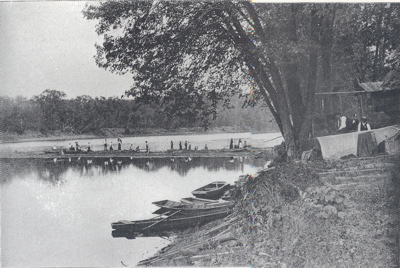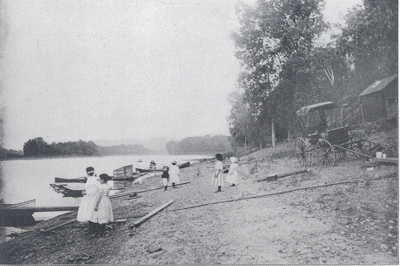Encyclopedia Dubuque
"Encyclopedia Dubuque is the online authority for all things Dubuque, written by the people who know the city best.”
Marshall Cohen—researcher and producer, CNN
Affiliated with the Local History Network of the State Historical Society of Iowa, and the Iowa Museum Association.
SHAWONDASEE
SHAWONDASEE. In 1889 a group of prominent Dubuque businessmen established an exclusive organization. The members of the Shawondasee Club included people with such prominent names as Adams, Ellsworth, Davenport, Deming, and Van Duzee. They acquired a long-term lease on eight acres about six miles south of Dubuque along the MISSISSIPPI RIVER and the route of the CHICAGO, MILWAUKEE, AND ST. PAUL RAILROAD. The area was called "EIFFES' GROVE." It would be renamed with a word which may have come from Henry Wadsworth Longfellow's poem "The Song of Hiawatha"
Shawondasee, fat and lazy,
Had his dwelling far to southward,
In the drowsy, dreamy sunshine,
In the never-ending Summer.
In the folklore of Native Americans, the word meant "south wind."
With a contribution of one hundred dollars each, a capital stock of $2,000 was established. Twenty lots, each twenty feet wide, were platted with the members drawing lots to determine their choice of cabin sites. Cottages were built in a row 'seventy steps up from the the railroad tracks to the west and seventy steps up from the river to the east.'
On May 21, 1889 the club was incorporated and a board of five was elected by the stockholders. New board members were elected annually in April. According to the articles of incorporation, the club's purpose was 'to convert the land into a pleasant, comfortable, and convenient summer resort.' Issues concerning the members were voted upon at meetings. The corporation was renewed and extended for a period of twenty years from May 21, 1949 to May 21, 1969. (1)
The resort gradually took on the appearance of a colony. Regulations were established on the use of 'firearms, boating, bathing, tennis, croquet, and driving automobiles.' Picnicking within the resort was permitted only with special permission of the board. A water tower from which water was piped to each cabin and a central dining hall were erected at the center of the cottages. In the early years, residents were required to eat meals in the dining hall where two chefs and waitresses provided meals. Formal dress was expected at the evening meal. Ten additional acres were leased to provide garden and pasture. Two caretakers were employed year-round cared for the gardens which provided vegetables and fruit. Gardeners and groundskeepers were also hired.
In 1895 a new water system was constructed along with two tennis courts, and croquet and quoit grounds. The "In Society" column of the Dubuque Herald once remarked that Shawondasee was "supplied with every appointment for summer pastime and pleasure, chief among them being a flotilla of boats of the latest design." A dam a short distance to the south blocked the current of the river and "made the water as safe and placid as a woodland lake." (2)
The close proximity to the train meant ease of travel. There was no formal religious observance at Shawondasee since people traveled to town for worship. Regular train service allowed passengers to be picked up and the deliveries of supplies. Businessmen entertained guests and their wives invited friends for teas and card parties.
Improvements to the amenities included an icebox and ice cream freezer in 1931. The Club purchased fire, liability and workmen's compensation insurance. Electricity was brought to the dining room and cabins in 1945. The same year road repair was completed and a water system, plumbing and a community telephone were added.
The development of Massey Marina gradually encroached on the southern edge of Shawondasee. By 2010 the dining hall was boarded up and the water tower was showing signs of age. Many of the original cabins had been replaced by modern homes lived in year-round. Although there was no longer a formal club, residents paid a monthly fee for road repairs and snowplowing.
See: Edward C. VOLKERT
---
Source:
1. "Corporation Notice," Telegraph-Herald, June 8, 1949, p. 18
2. "In Society," The Dubuque Herald, April 7, 1895, p. 2
Gibson, Michael. "Yesterday and Today," The Golden View, 2010



